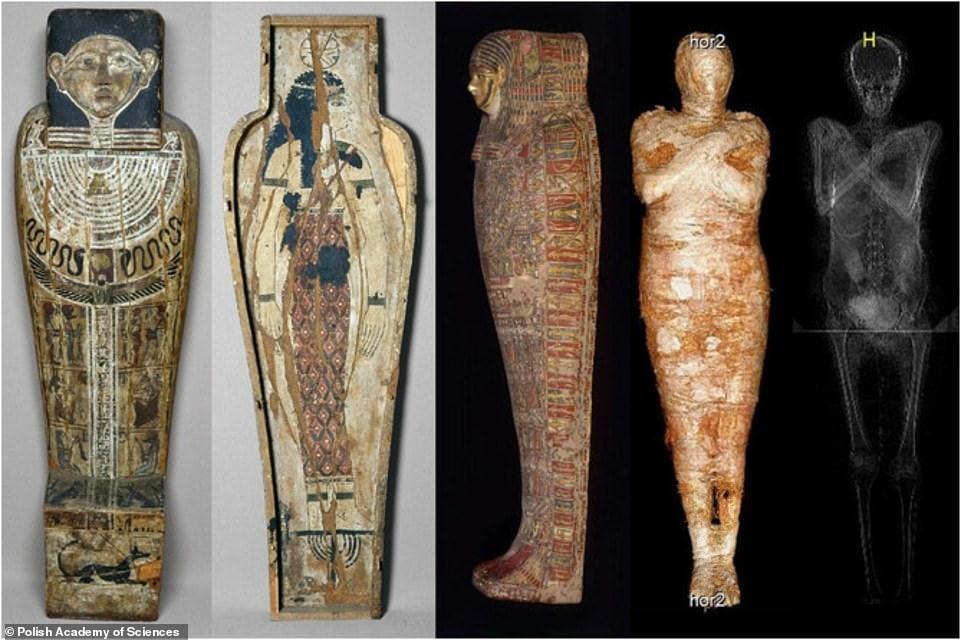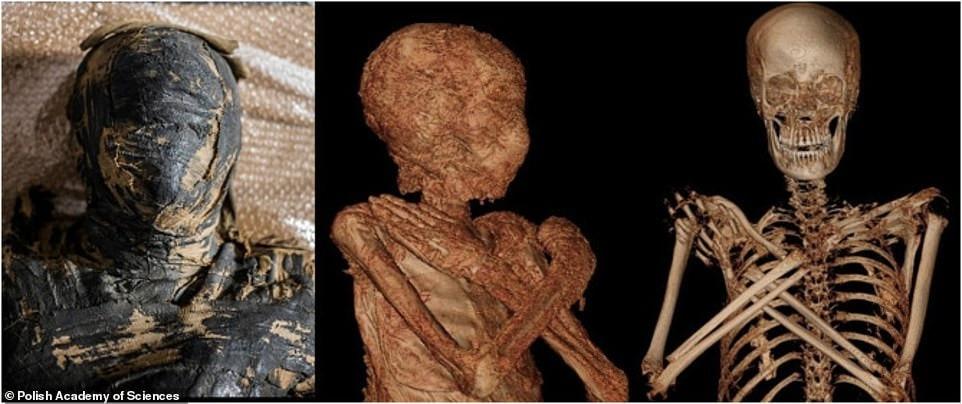World’s first pregnant ancient Egyptian mummy discovered, dating back over 2,000 years and 28 weeks pregnant

Experts from the Polish Academy of Sciences intend to investigate all mummies in museums within the framework of the Warsaw Mummy Project. As part of this project, researchers worked to find out more about the woman who is believed to be in her 20s.
The first mummified bones of a pregnant woman from ancient Egypt have been found in Thebes, dating back more than 2,000 years. According to body scans, she died at the age of 28 weeks pregnant.
The team found the remains of a fetus, between 26 and 30 weeks old, inside the woman using a combination of CT scans and X-rays. It is the first time a pregnant mummy has been discovered.
According to the authors of an article published in the Journal of Archaeological Science, the body of the woman who died 2,000 years ago was carefully wrapped in cloth and left with a rich collection of amulets to accompany her into the afterlife.
The team cannot say why the fetus remained inside the woman and was not mummified separately, but it could be because it was too young to have a name and needed to travel to the afterlife inside its mother.
The study’s lead author, Dr Wojciech Ejsmond, said this was the “first discovery of an embalmed body of a pregnant woman”, adding: “There is no other ancient body of a pregnant woman so well preserved.”
The body was wrapped in fine cloth and buried with a set of amulets depicting the four sons of Horus, which the team believes indicates she was a powerful figure in Thebes.

The head and CT scan of the mummy. The first remains of a mummified pregnant woman from ancient Egypt, dating back more than 2,000 years, have been discovered in Thebes; the corpse was 28 weeks pregnant when she died.
According to the authors of the study, the mummy was discovered in royal tombs in Thebes, in Upper Egypt, and came from the elite of Theban culture.
The woman was transported to Warsaw, Poland, in 1826, at the time of some of the most famous Egyptian finds from the Valley of the Kings, and is now on display at the National Museum in Warsaw.
“This mummy offers new possibilities for studies of pregnancy in antiquity, which can be compared and related to current cases,” the authors of the study wrote.
“Furthermore, this specimen sheds light on an under-researched aspect of ancient Egyptian funerary customs and interpretations of pregnancy in the context of ancient Egyptian religion.”
“For Egyptologists, this is a fascinating discovery because we know little about perinatal health and childhood in ancient Egypt,” added Dr. Ejsmond.
“Doctors can study, for example, the intestinal contents of the fetus to gain insight into the development of the immune system in ancient times.”
The fetus was mummified alongside its mother in the lower part of the lesser pelvis and partially in the lower part of the greater pelvis. However, it was not removed from its original location.






